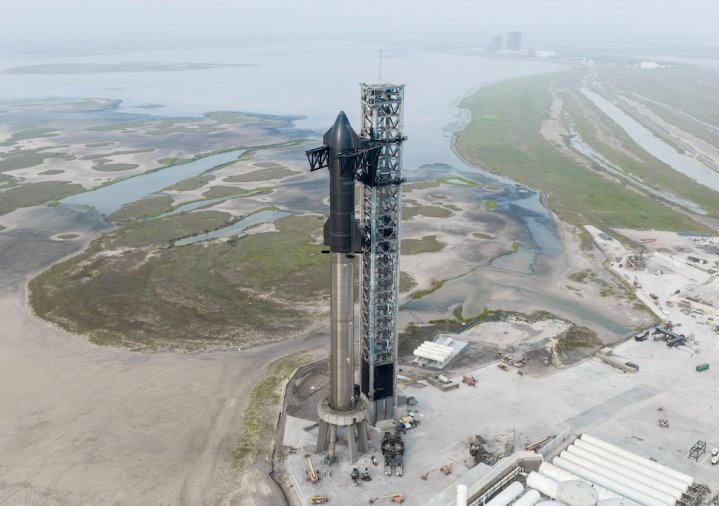The planned first test flight of the SpaceX Starship and Super Heavy rocket has been scrubbed. The launch of the world’s most powerful rocket had been scheduled for today, Monday April 17, but was called off due to a frozen valve.
The decision was made to halt the countdown around 10 minutes before liftoff, turning the event today into a wet dress rehearsal instead of a test flight. That means the rocket was fueled and ready to launch, but did not actually leave the ground, and the countdown was halted around 40 seconds before liftoff. “A pressurant valve appears to be frozen, so unless it starts operating soon, no launch today,” SpaceX CEO Elon Musk said on Twitter.

SpaceX has been working on its Starship spacecraft and Super Heavy booster for missions to the moon and beyond, with the first test flight planned to take off from Starbase facility at Boca Chica in Texas. The resuable rocket is designed to carry crew and cargo on missions beyond Earth orbit, as a complement to SpaceX’s Falcon 9 rocket, which is used for taking crew and cargo into low-Earth orbit.
SpaceX said that the problem was with the rocket’s first stage pressurization system, but no further details are yet available on the valve issue. However, a second launch attempt could be made within a week, according to Musk, who wrote a follow-up tweet saying: “Learned a lot today, now offloading propellant, retrying in a few days”.
The goal of the launch is to see the Starship launched using the Super Heavy rocket. they will then separate, with the Starship traveling into near-orbit while the first stage booster splashes into the Gulf of Mexico. The plan is for subsequent versions of the booster to be recoverable for future reuse, but the booster used for the first test flight won’t be recovered.
The rocket system will be used by NASA for future missions to the moon under the Artemis program, including carrying humans to the moon and a variety of private moon payloads.
A livestream of the launch attempt was made available by SpaceX, and you can watch a replay of the event using the video below.



